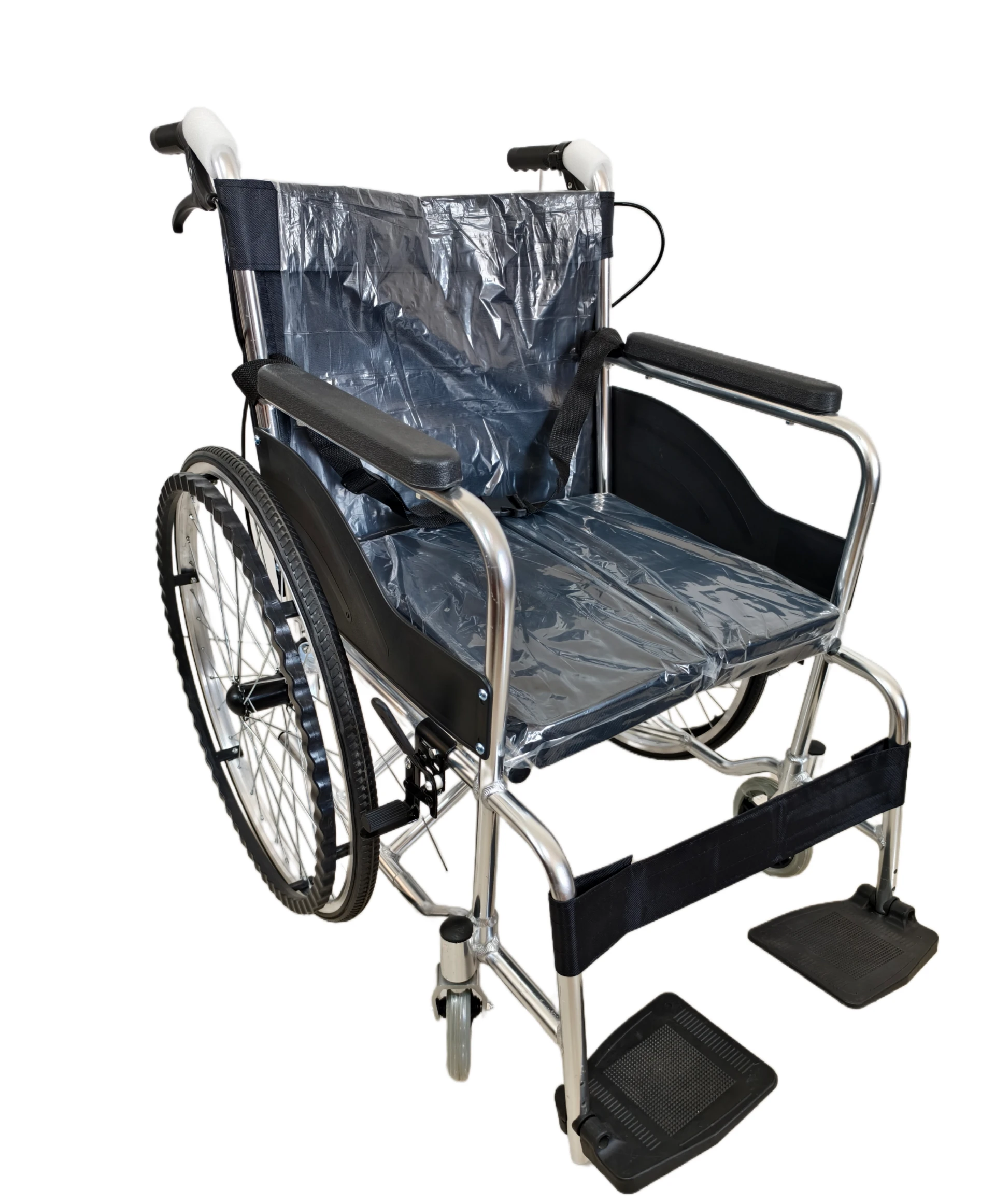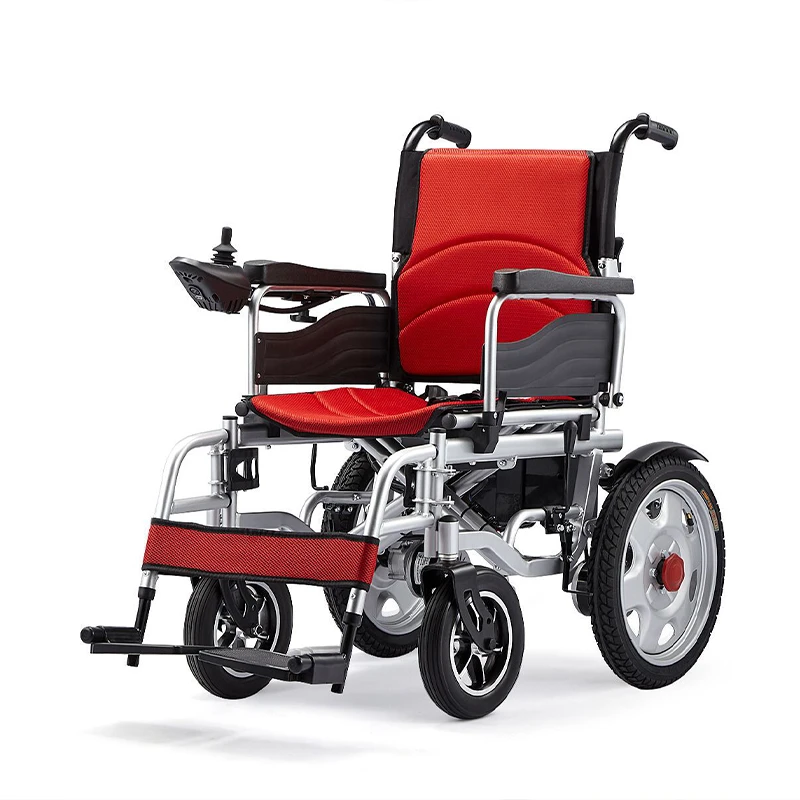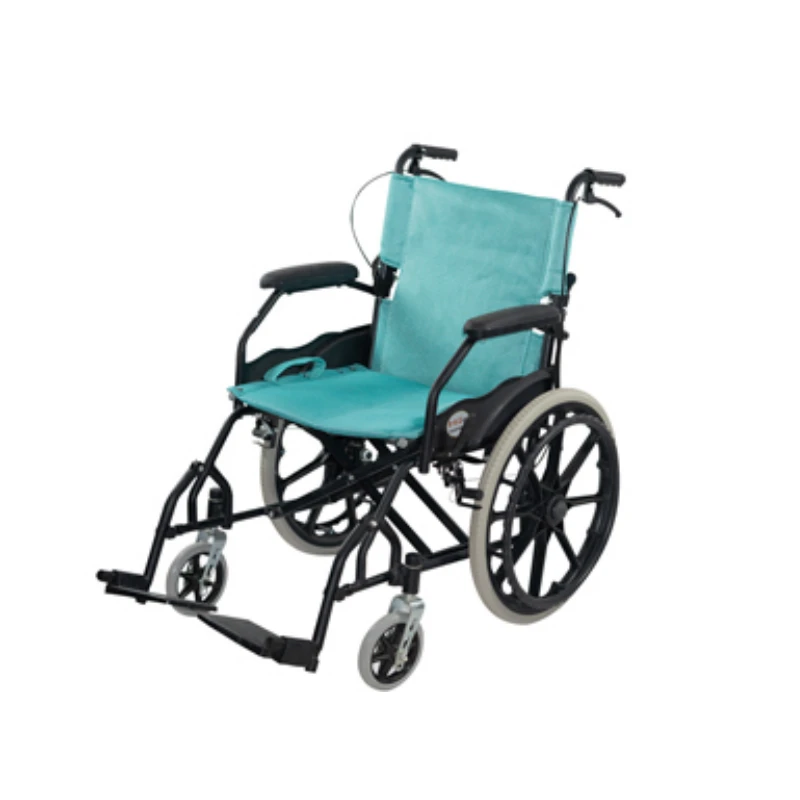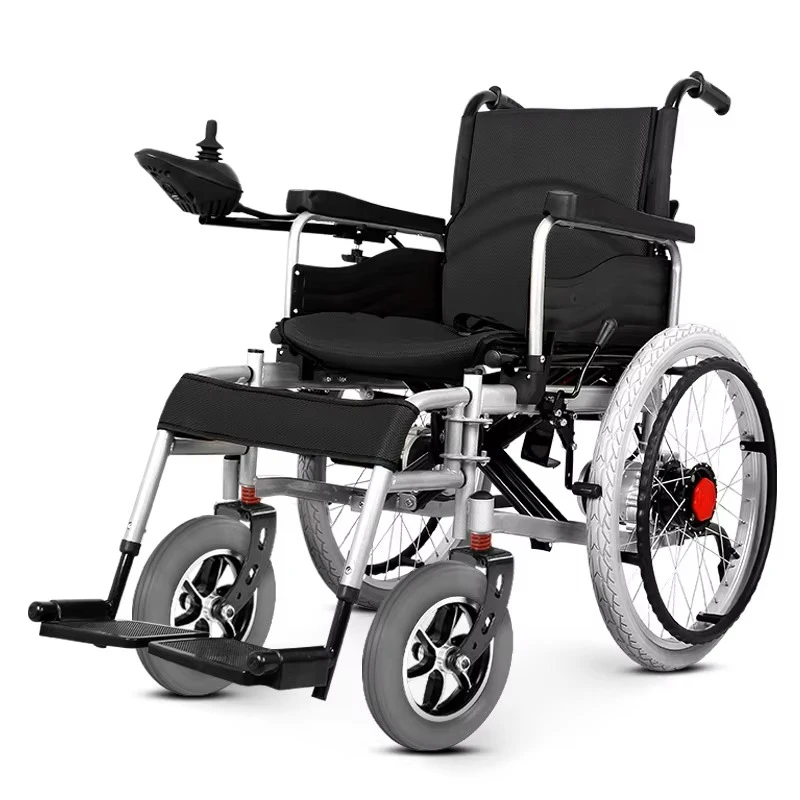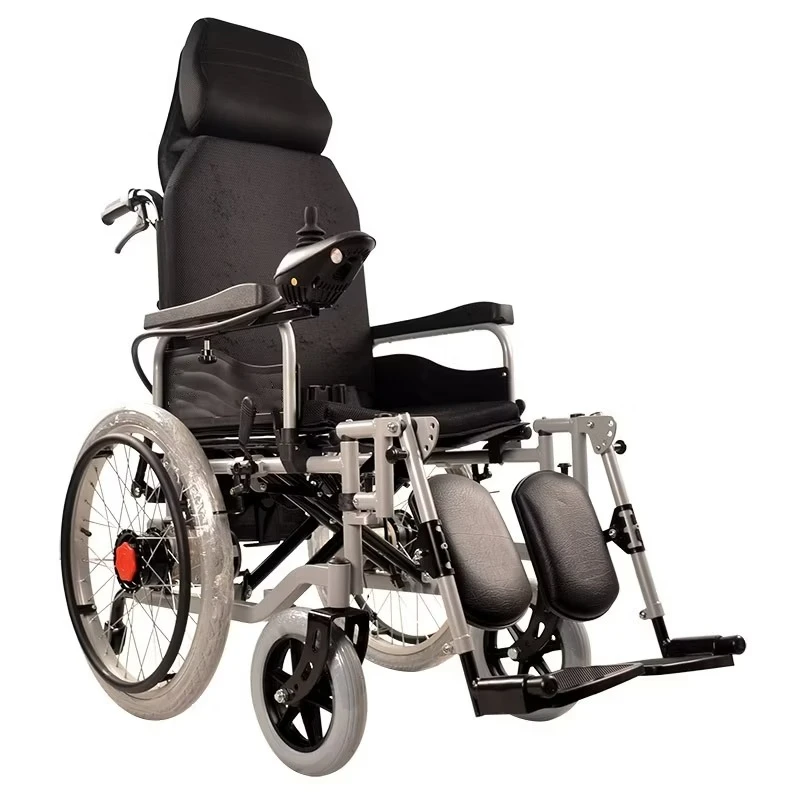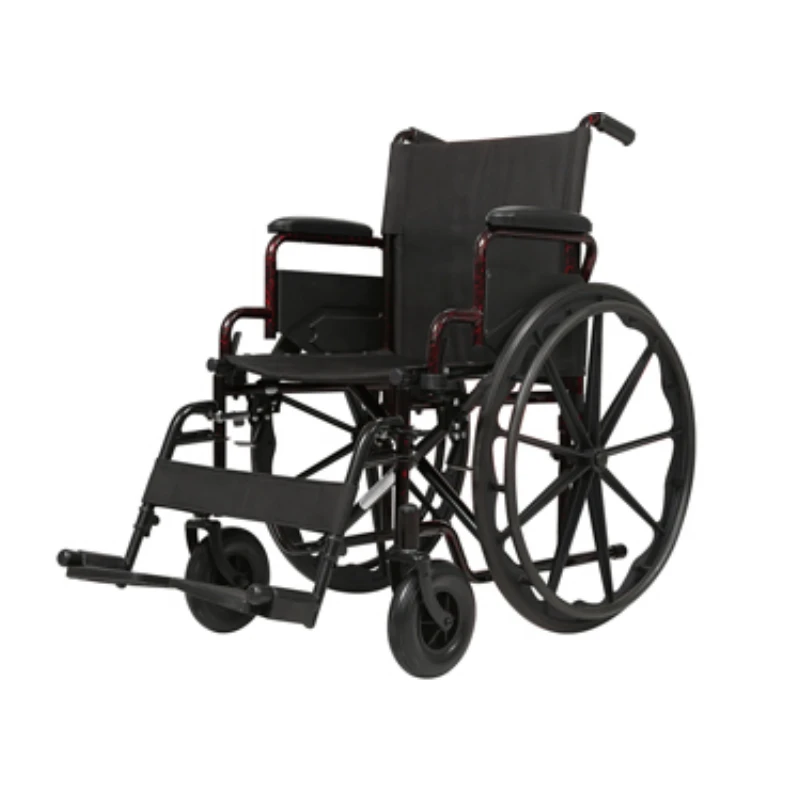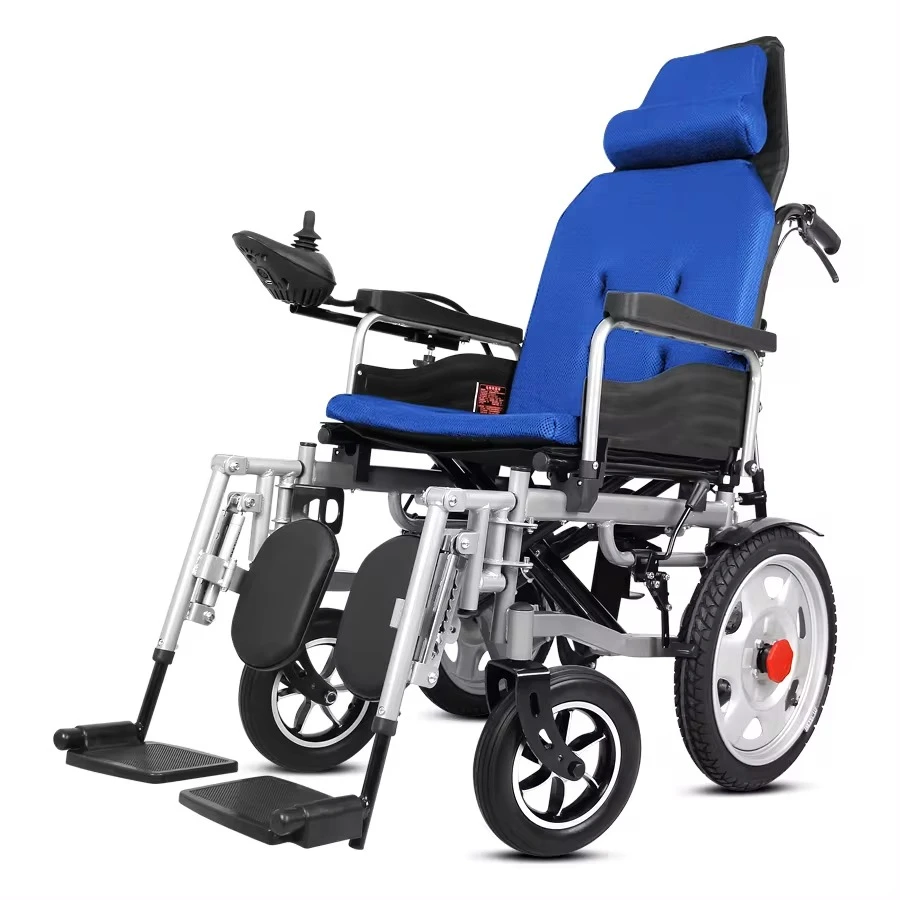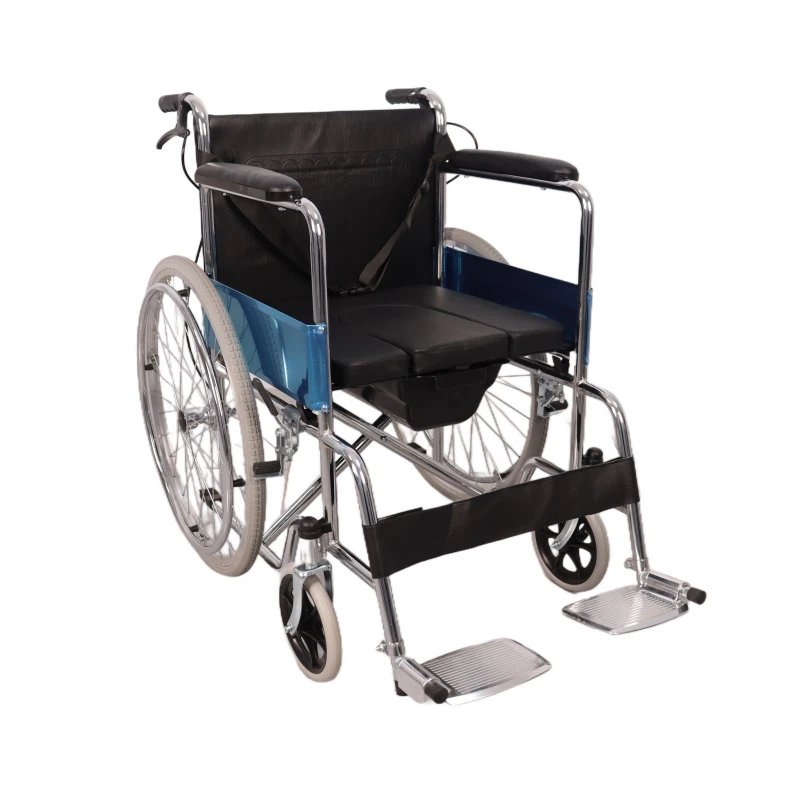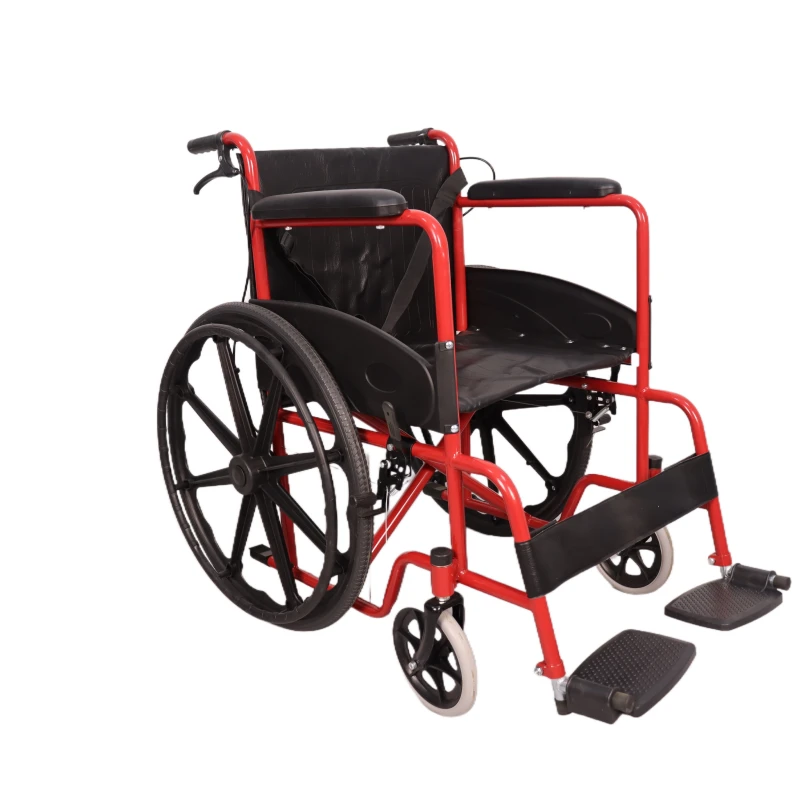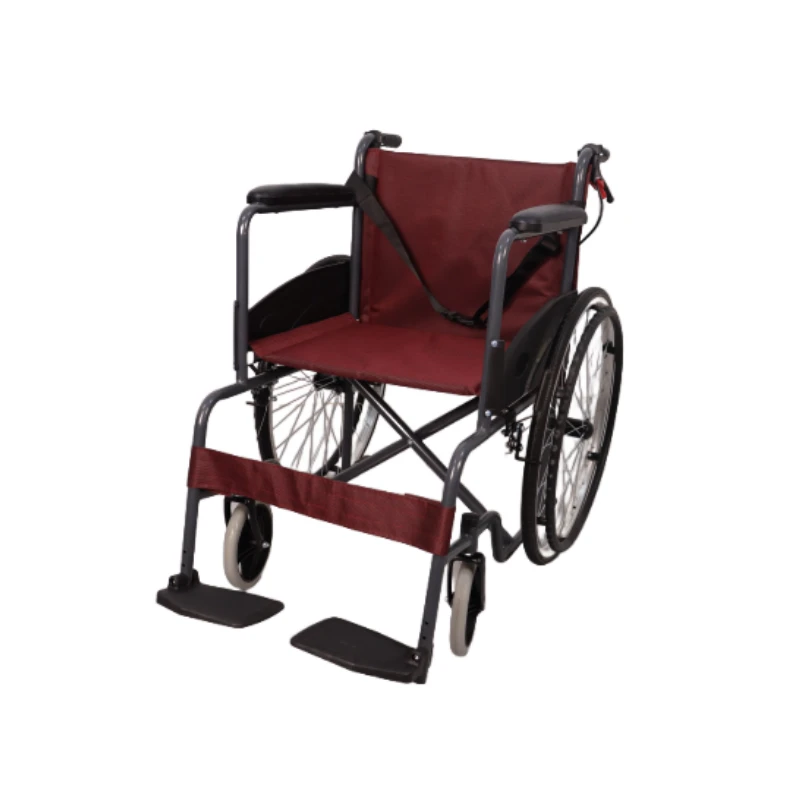
A wheelchair is an essential mobility aid designed to assist individuals with limited or no ability to walk. Key features of a wheelchair include adjustable footrests, armrests, and seat cushions that provide comfort and support during use. Many models offer adjustable backrests and seat heights to accommodate different user needs, ensuring proper posture and reducing the risk of pressure sores. Wheelchairs typically have large, durable wheels designed for smooth movement on various surfaces, with some models featuring shock-absorbing tires for enhanced comfort on uneven terrain. The wheels can be either manual or powered, depending on the user’s level of mobility and strength. Manual wheelchairs often come with large rear wheels for self-propulsion, while powered wheelchairs are equipped with motors to assist with movement, ideal for users with limited upper body strength. Frame materials, such as lightweight aluminum or steel, offer durability while maintaining portability. Some wheelchairs are foldable, making them easy to store or transport, while others are designed for specific needs, such as sports or bariatric use. Safety features like anti-tip bars and secure brakes are essential for preventing accidents, providing stability when the wheelchair is stationary. Additionally, many modern wheelchairs come with customizable options, allowing users to select the best configuration based on their lifestyle, preferences, and medical requirements.
How Do Wheelchairs Benefit Users and Healthcare Providers?
Wheelchairs offer significant benefits to both users and healthcare providers by enhancing mobility, independence, and comfort. For users, a wheelchair provides the freedom to move independently, improving quality of life by allowing individuals to participate in daily activities that may have been otherwise difficult or impossible. Manual wheelchairs offer individuals the ability to self-propel, while powered wheelchairs help those with limited strength or dexterity to navigate without assistance. The ability to choose from various wheelchair models ensures that users can select the one best suited to their needs, whether they require a lightweight, foldable design for travel or a more durable model for long-term use. By promoting mobility and independence, wheelchairs help reduce the risk of isolation and depression, allowing users to engage in social and community activities. For healthcare providers, wheelchairs are crucial for patient care, particularly for individuals with temporary or permanent disabilities. Wheelchairs allow providers to assist with patient mobility in and out of various settings, ensuring that patients can safely move between hospital rooms, clinics, or even within their homes. In a healthcare facility, wheelchairs help in transporting patients for procedures, to different departments, or for physical therapy, improving workflow efficiency. Healthcare providers also benefit from the ergonomic design of modern wheelchairs, which offer comfort and support, ensuring that patients remain safe and comfortable during transport.
How To Choose The Right Wheelchair For A Patient or Healthcare Facility?
Choosing the right wheelchair for a patient or healthcare facility requires careful consideration of several factors to ensure that the equipment meets both the user’s needs and the practical requirements of the healthcare environment. Begin by assessing the patient's mobility level—if the individual has some upper body strength, a manual wheelchair may be sufficient, whereas a powered wheelchair is ideal for users with limited upper body function or who require assistance with self-propulsion. Additionally, consider the user’s specific medical condition, as certain wheelchairs are designed for specialized needs such as bariatric, sports, or post-surgery recovery. Look for a wheelchair with adjustable features, such as footrests, armrests, and backrests, which provide personalized comfort and help prevent discomfort during prolonged use. Durability and materials are key; lightweight materials like aluminum or titanium are ideal for portability, while steel frames offer extra strength for heavy-duty use. Comfort is paramount, so ensure that the seat cushions and backrests provide adequate support and pressure relief to prevent pressure ulcers. The environment in which the wheelchair will be used is also important; if it will be used outdoors, consider models with larger wheels or shock-absorbing tires for smoother movement over uneven surfaces. Furthermore, foldable or compact designs are beneficial for easy storage and transport. Lastly, consider safety features, such as secure brakes and anti-tip bars, and ensure that the wheelchair complies with relevant medical and safety standards to provide maximum protection for the user.



 PDF
PDF